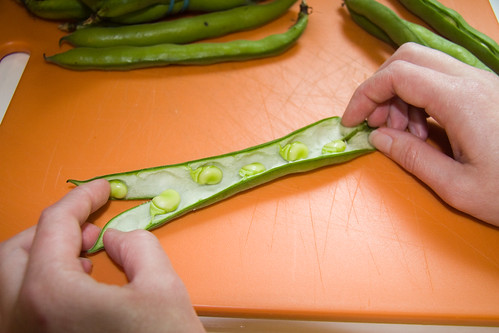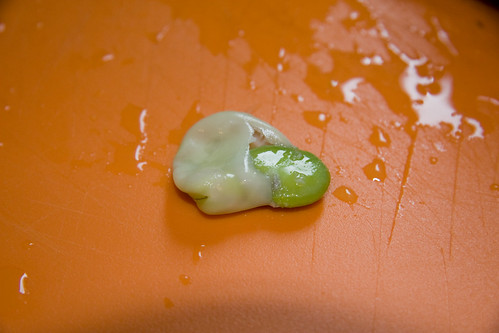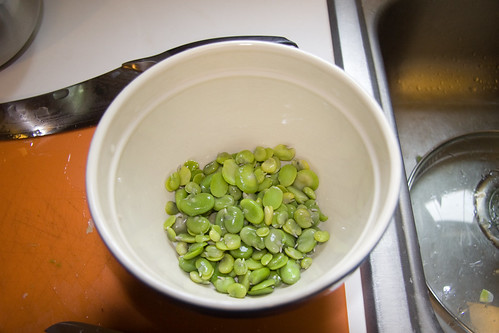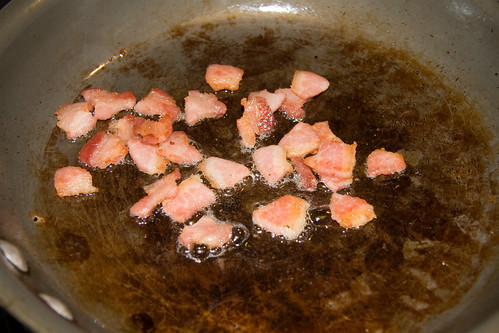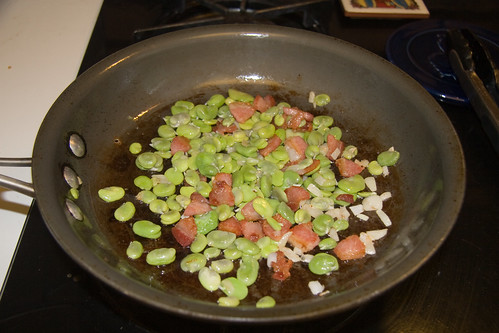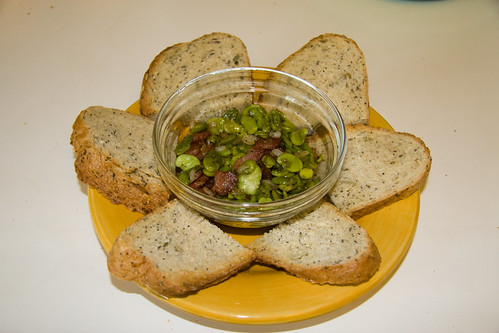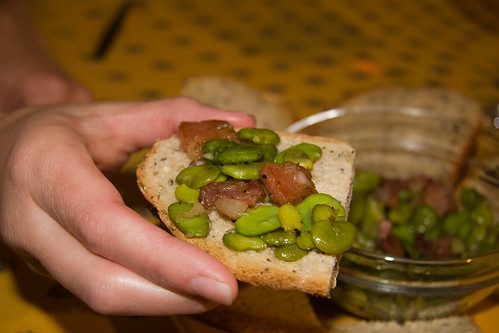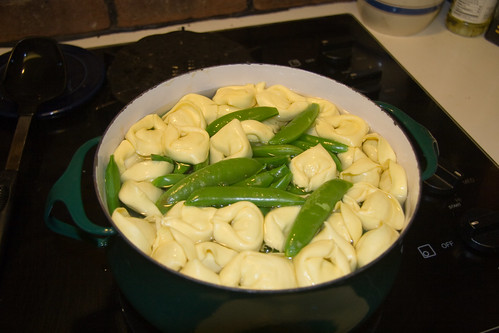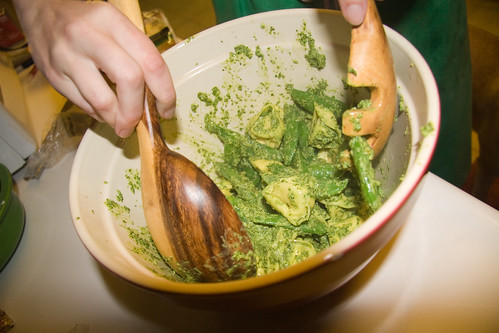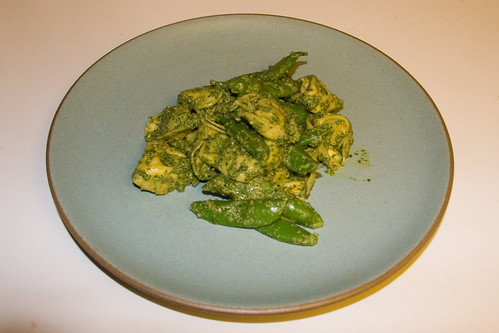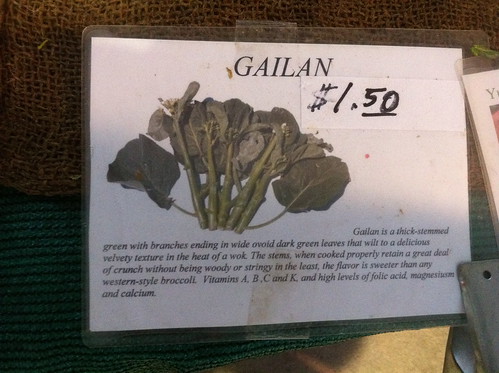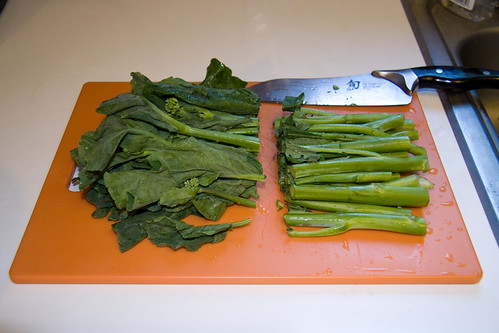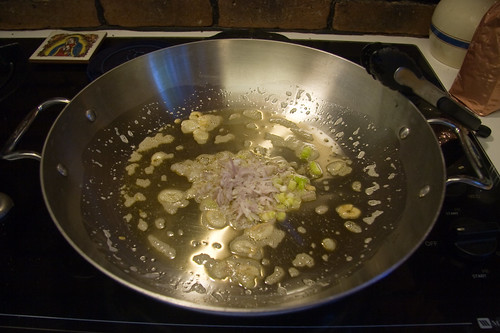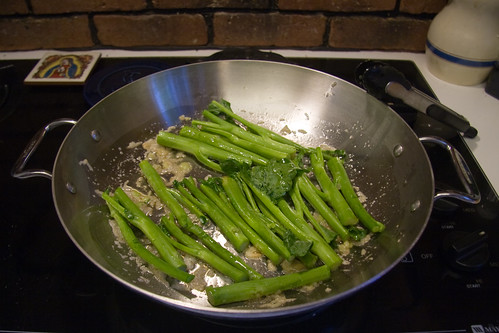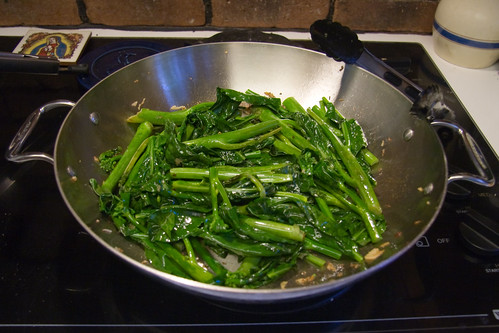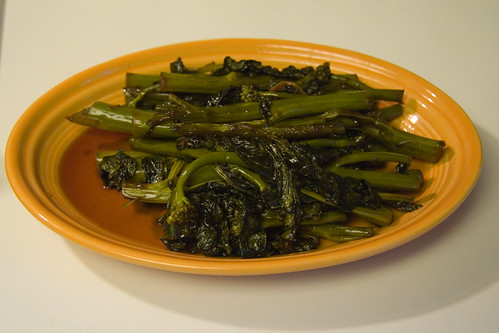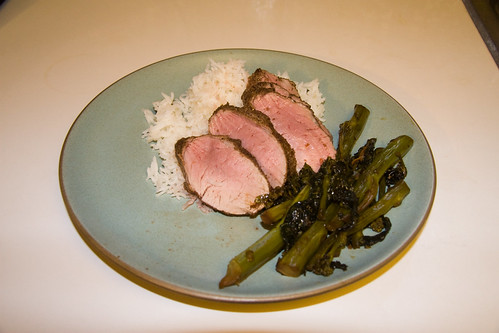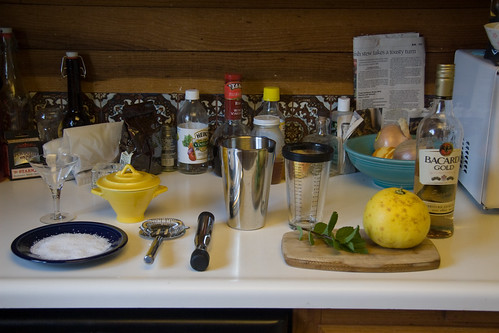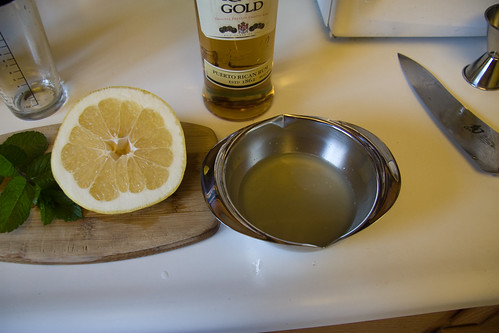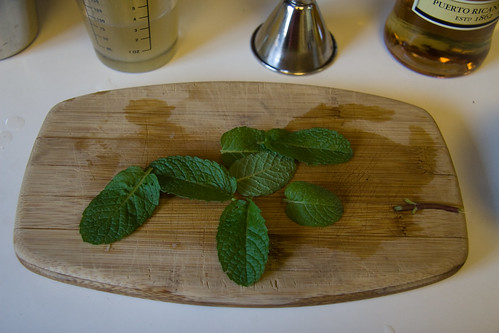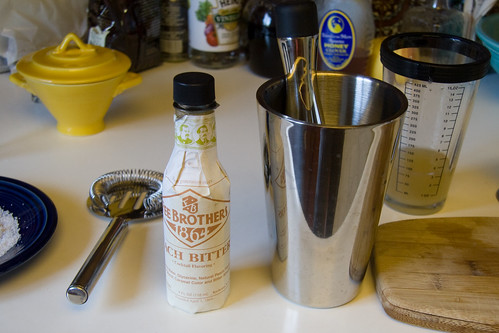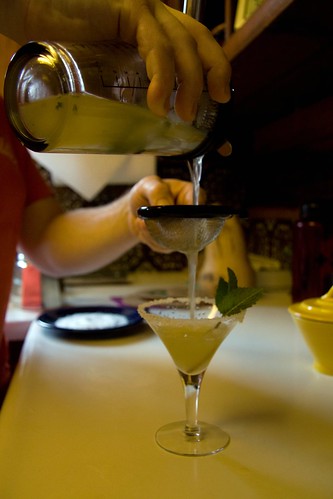The French are fairly praised for the beauty of their language. “L’amour” rolls delicately from the tongue, “coquelicot” implies a level of intoxication that “poppy” cannot muster and even “révolution” possesses a loopy sweetness that belies the fervor with which the French have practiced it. By far my favorite French word, however, is clipped and simple. Two balanced syllables—one round and open, one thin and pointed: “Confit.” The well regarded French tome, Le Petit Robert, defines confit as “preparation of certain meats cooked and preserved in their own fat,” a description that does little to emphasize the delectable qualities of this practical preservation method. Confit—particularly duck confit, a gorgeous tub of duck legs submerged in creamy duck fat—is simply some of the greatest meat ever.
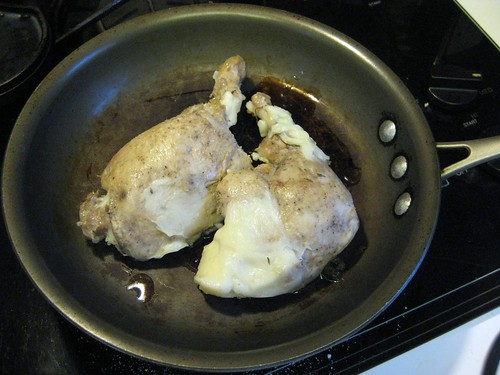
Last weekend, after months of talking about it, we finally made it to the Fatted Calf at Napa’s Oxbow Public Market. The Fatted Calf is the first place we’ve gone in California that delivered the same happiness that we derived from our Portland neighborhood butcher, Laurelhurst Market. We went prepared to bring home a haul of meats, including their wonderful duck confit.

One of the delights of duck confit is its magnanimity. After heating it up in a pan for enjoyment with a salad, you’re left with a good 1/2 cup of duck fat which can be strained and saved for use in another delicious meal. Duck fat is fantastic for frying, healthier than butter and, in my experience, keeps indefinitely when refrigerated in a sealed jar. I strained this fat into a glass dish and covered it, since we were going to use it in a couple days.

It may be apocryphal, but I have heard that the true and correct recipe for Belgian frîtes uses duck fat rather than oil. It doesn’t really matter if this is true or not, because it’s a great idea and the results are absolutely delicious. Better yet, it’s pretty easy to do at home. So easy that the we made some duck fat frîtes to go with Pliny the Elder sausages (also from the Fatted Calf) for lunch. The first step was to cut some potatoes up into nice thick pieces.
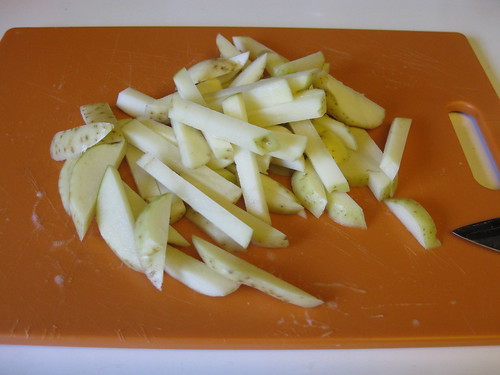
I soaked the potatoes in a bowl of cool water for 15 minutes to remove some of the starch. Meanwhile, I melted 1/3-1/2 cup of duck fat in a cast iron skillet over medium high heat. My goal was for the fat to be around 3/16″ deep.
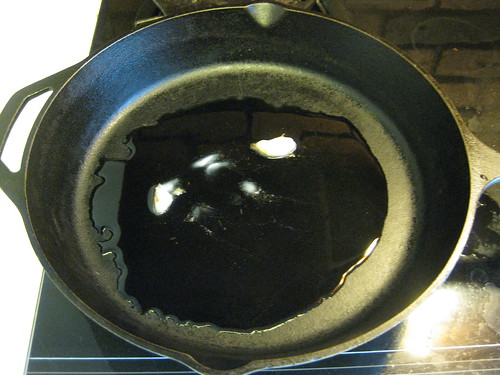
Once the fat was nice and hot, I strained the potatoes in a colander and gently put half of them into the pan.

This batch cooked for about 10 minutes. I flipped them periodically to make sure each side got equal time in the fat. When they were done, we placed them on paper towels to remove a bit of the fat from the outside, then transferred them to a bowl for salting.

The first batch was a touch soft, so I fried the second batch a little longer, 12 minutes maybe, to get them a bit crispier.
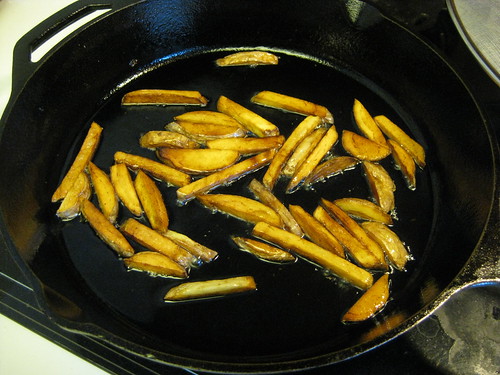
We salted the frîtes with a smokey Salish salt.

Served alongside the delicious sausage, these frîtes were a really delicious treat.

You can enjoy all the photos of this process here.


